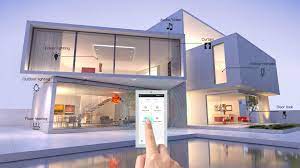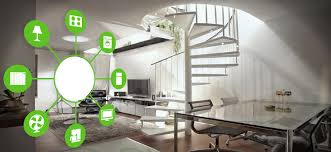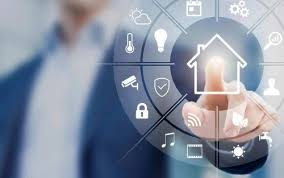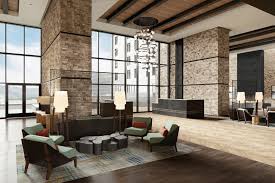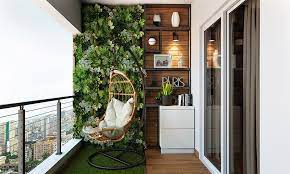Home Automation
- Home // Home Automation
Home Automation
Home automation refers to the integration of technology and smart devices into a home to automate and control various household tasks and functions. The goal of home automation is to enhance convenience, comfort, energy efficiency, and security for homeowners. It allows residents to manage and monitor their home remotely or through automated systems.
Here are some common components and features of home automation:
-
Smart Lighting: Home automation allows users to control lighting systems remotely or set up schedules for lights to turn on or off automatically. Some systems can adjust brightness and color temperature for specific moods or energy efficiency.
-
Smart Thermostats: These devices can be programmed or adjusted remotely to regulate the heating, ventilation, and air conditioning (HVAC) system, resulting in energy savings and personalized comfort.
-
Smart Security: Home automation can include smart security cameras, doorbell cameras, and motion sensors that provide real-time monitoring and alerts. Smart locks allow remote locking and unlocking of doors.
-
Smart Home Entertainment: Home automation systems can control audio and video devices, such as TVs, speakers, and media players, to create seamless entertainment experiences.
-
Smart Appliances: Some appliances, like refrigerators, ovens, washing machines, and vacuum cleaners, can be integrated into home automation systems for remote control and management.
-
Voice Control: Integration with virtual assistants like Amazon Alexa, Google Assistant, or Apple HomeKit allows homeowners to control various devices and functions through voice commands.
-
Smart Energy Management: Home automation can help optimize energy usage by monitoring and controlling energy-consuming devices, leading to reduced energy consumption and lower utility bills.
-
Automated Window Treatments: Motorized blinds and curtains can be controlled remotely or set up on timers to adjust natural lighting and enhance privacy.
-
Smart Irrigation Systems: These systems use weather data and soil moisture sensors to optimize watering schedules for gardens and lawns.
-
Home Monitoring and Automation Apps: Many home automation systems come with dedicated mobile apps that enable homeowners to control and monitor their devices and security systems remotely.
Benefits of Home Automation:
- Convenience and ease of control: Home automation simplifies various tasks by enabling centralized and remote control of devices and functions.
- Energy efficiency: Automated systems can optimize energy usage and reduce wastage, leading to lower utility bills.
- Enhanced security: Smart security systems offer real-time monitoring and alerts, enhancing home safety.
- Increased comfort: Personalized settings and automated adjustments can create a comfortable living environment.
However, it's essential to prioritize security and privacy when implementing home automation. Homeowners should use secure networks and regularly update passwords to protect their connected devices from potential cyber threats.

